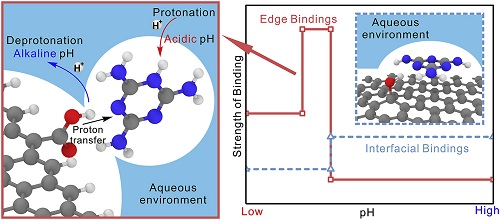Unravelling the interactions between organic molecules and reduced graphene oxide in an aqueous environment
Published in Carbon, October 15, 2020
Jun Xia; YinBo Zhu; Xu Jin; HengAn Wu*; Unravelling the interactions between organic molecules and reduced graphene oxide in an aqueous environment, Carbon, 2020, 167: 345–350. https://doi.org/10.1016/j.carbon.2020.06.034

Abstract: Plenty of experiments have implied the possible role of moisture and especially pH variations in tailoring the mechanical properties of carbon-based composites. However, this effect of ambient aqueous environment remains elusive at the atomic level and was oft-overlooked in previous analytical studies upon (reduced) graphene oxide ((r)GO)-based binding systems. Here, using first-principles calculations with melamine as the representative organic molecule, we investigate the binding states between organic molecule and rGO in aqueous environment. We found that the solvent phase triggers the enhancement of noncovalent interactions and even a structural transition in the system. The bindings at rGO edge show excellent flexibilities in response to the pH-induced protonation and deprotonation, demonstrating their non-negligible importance in tuning the strength of organic molecule/rGO system, in sharp contrast to the relatively stable interfacial counterparts. Our insights provide a deepened understanding of the solvent-phase chemo-physical behavior, paving a promising way in tailoring (r)GO-based materials for aqueous-phase applications.
